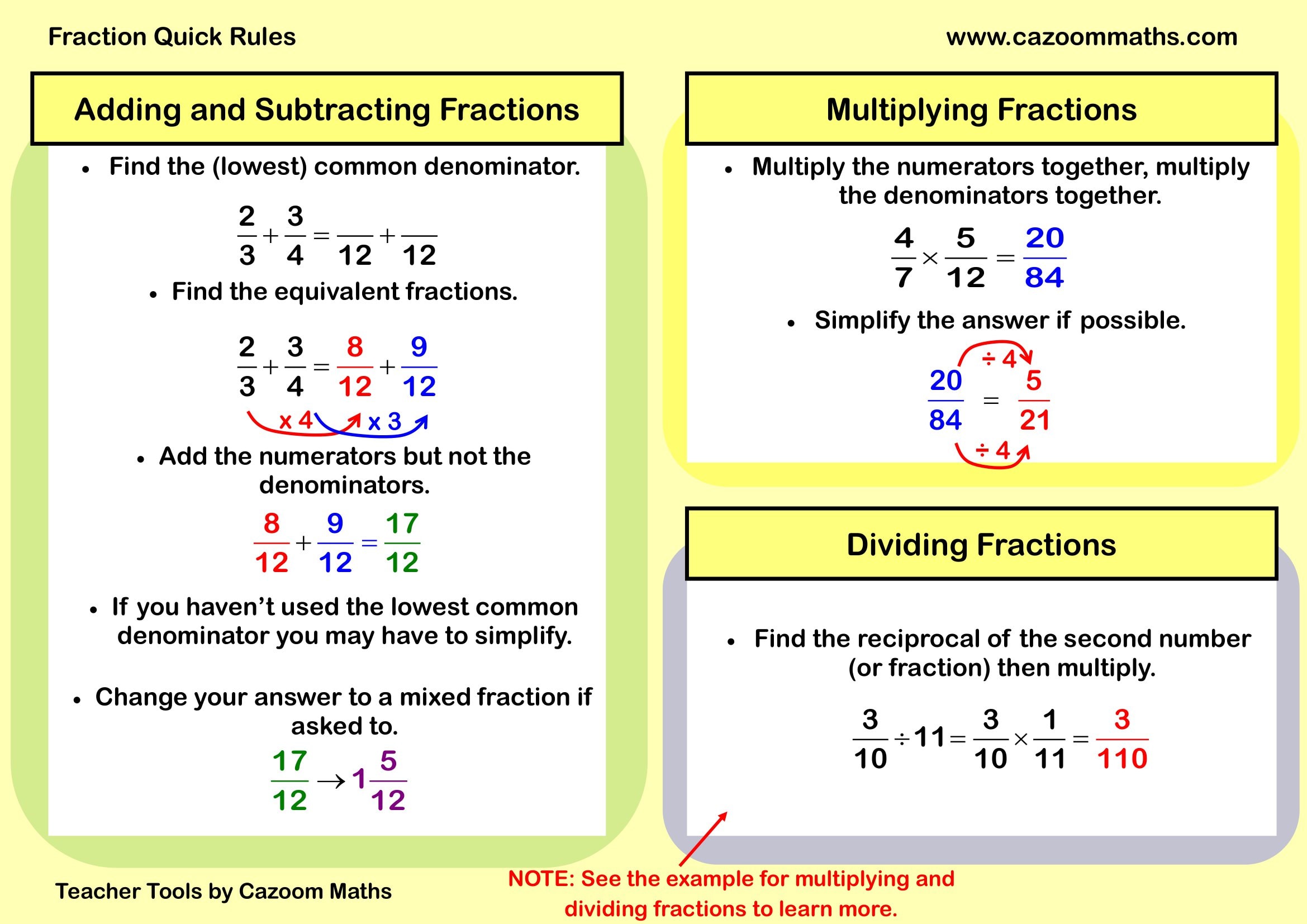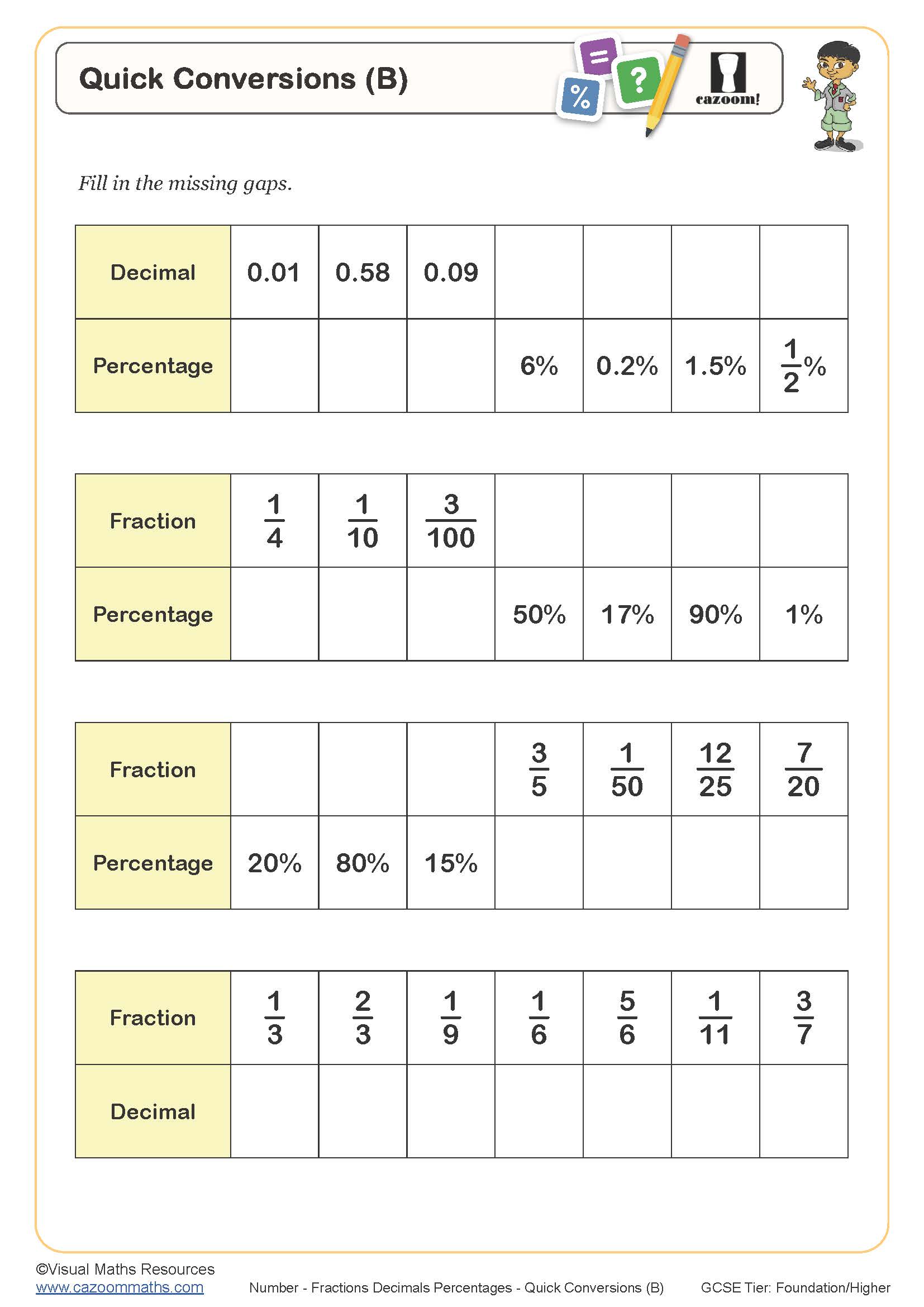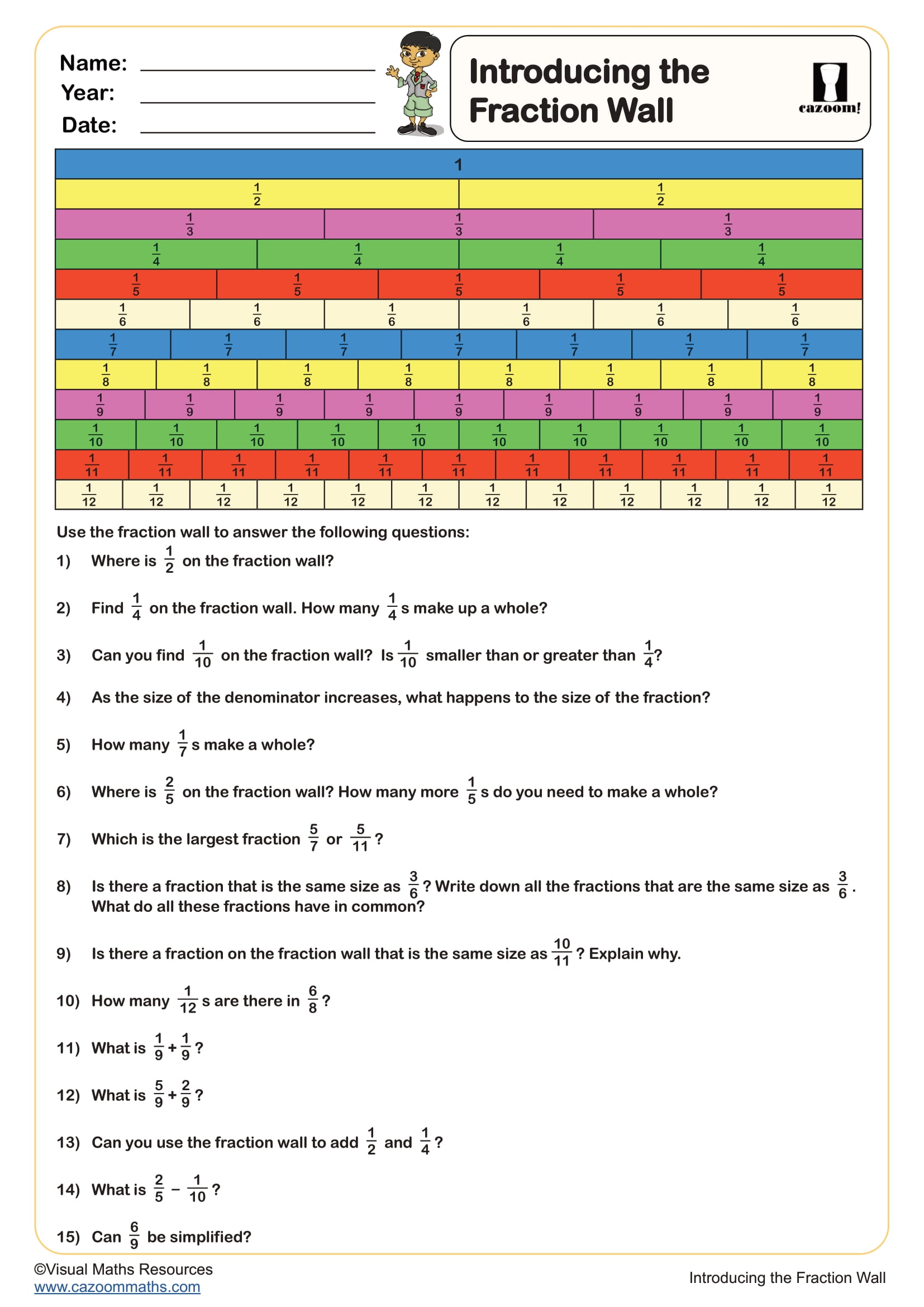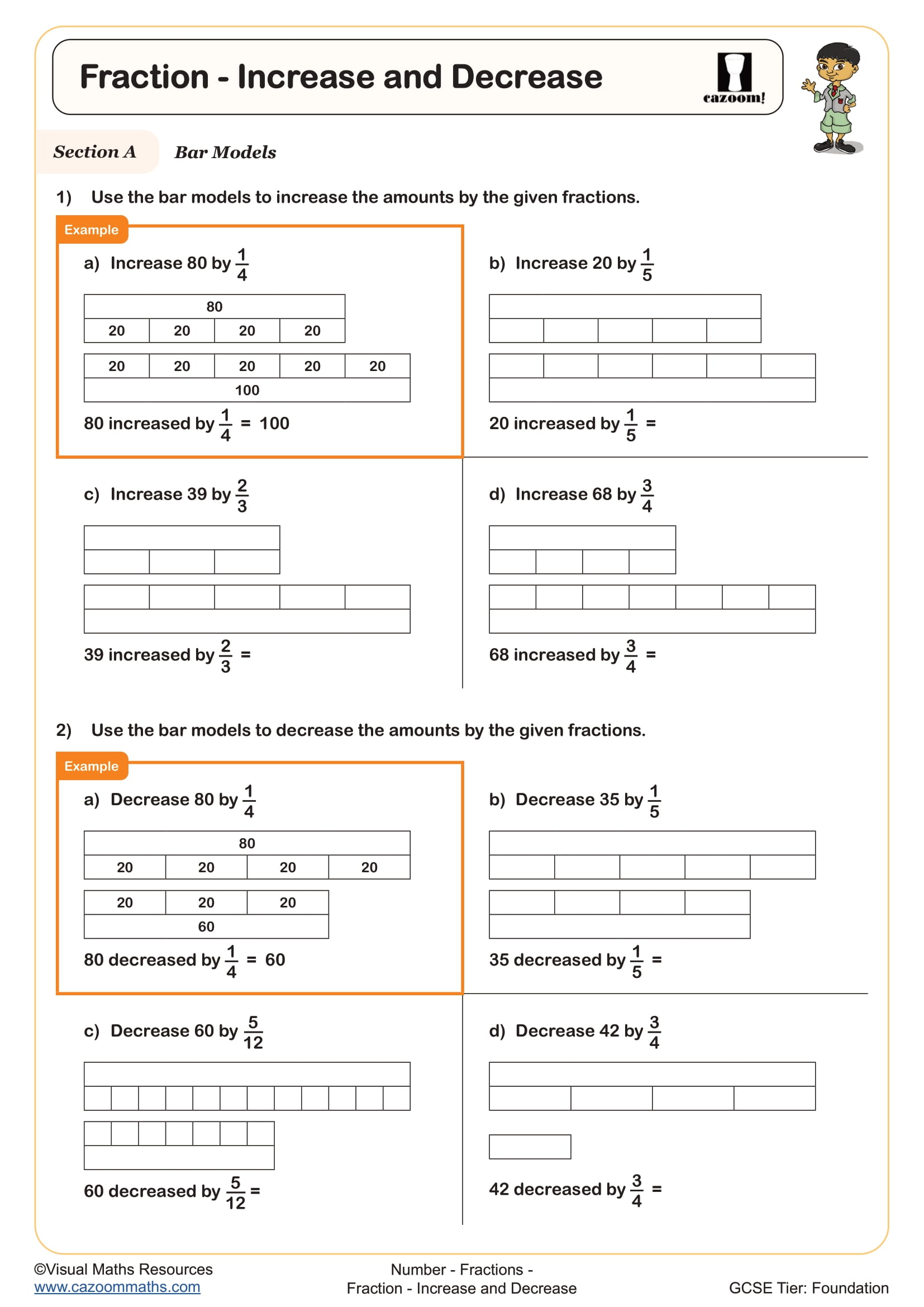Fraction Quick Rules RESOURCE (FREE DOWNLOAD)
Fraction Quick Rules RESOURCE DESCRIPTION
This resource shows brief rules and examples for adding, subtracting, multiplying and dividing fractions. Useful as a poster or handout.
Fraction Rules: A Complete Guide to Adding, Subtracting, Multiplying, and Dividing Fractions
Fractions are an essential part of the KS2 and KS3 maths curriculum. Understanding the basic rules of fractions makes many types of calculations easier. Our number teaching resource, ‘Fraction Quick Rules’, will help you teach and understand fraction rules step by step. This guide covers addition, subtraction, multiplication, and division of fractions.
Basic Rules of Fractions
- A fraction has a numerator (top) and a denominator (bottom).
- To simplify a fraction, divide the numerator and denominator by their greatest common factor (GCF).
- Always express answers in their simplest form or as a mixed number if required.
Adding and Subtracting Fractions
When adding or subtracting fractions, the denominators must be the same.
Step 1: Find a Common Denominator
Convert fractions to have the same denominator by finding the lowest common denominator (LCD).
Example:
\[
\frac{2}{3} + \frac{3}{4}
\]
The LCD of 3 and 4 is 12. Convert both fractions:
\[
\frac{2}{3} = \frac{8}{12}, \quad \frac{3}{4} = \frac{9}{12}
\]
Step 2: Add the Numerators
\[
\frac{8}{12} + \frac{9}{12} = \frac{17}{12}
\]
Step 3: Convert to a Mixed Number (if needed)
\[
\frac{17}{12} = 1 \frac{5}{12}
\]
Final Answer: \(1 \frac{5}{12}\)
Note: For subtraction, follow the same steps but subtract the numerators.
---
Multiplying Fractions
Step 1: Multiply the Numerators
Step 2: Multiply the Denominators
Step 3: Simplify the Answer
Example:
\[
\frac{4}{7} \times \frac{5}{12}
\]
\[
\frac{4 \times 5}{7 \times 12} = \frac{20}{84}
\]
Now simplify by dividing by 4:
\[
\frac{20}{84} = \frac{5}{21}
\]
Final Answer: \( \frac{5}{21} \)
---
Dividing Fractions
To divide fractions, flip the second fraction (reciprocal) and multiply.
Example:
\[
\frac{3}{10} \div \frac{11}{1}
\]
Step 1:
Flip the second fraction:
\[
\frac{1}{11}
\]
Step 2:
Multiply:
\[
\frac{3}{10} \times \frac{1}{11} = \frac{3}{110}
\]
Final Answer: \( \frac{3}{110} \)
---
Quick Tips for Working with Fractions
- Always simplify your answers where possible.
- Convert improper fractions to mixed numbers when required.
- Use cross-multiplication to compare fractions.




